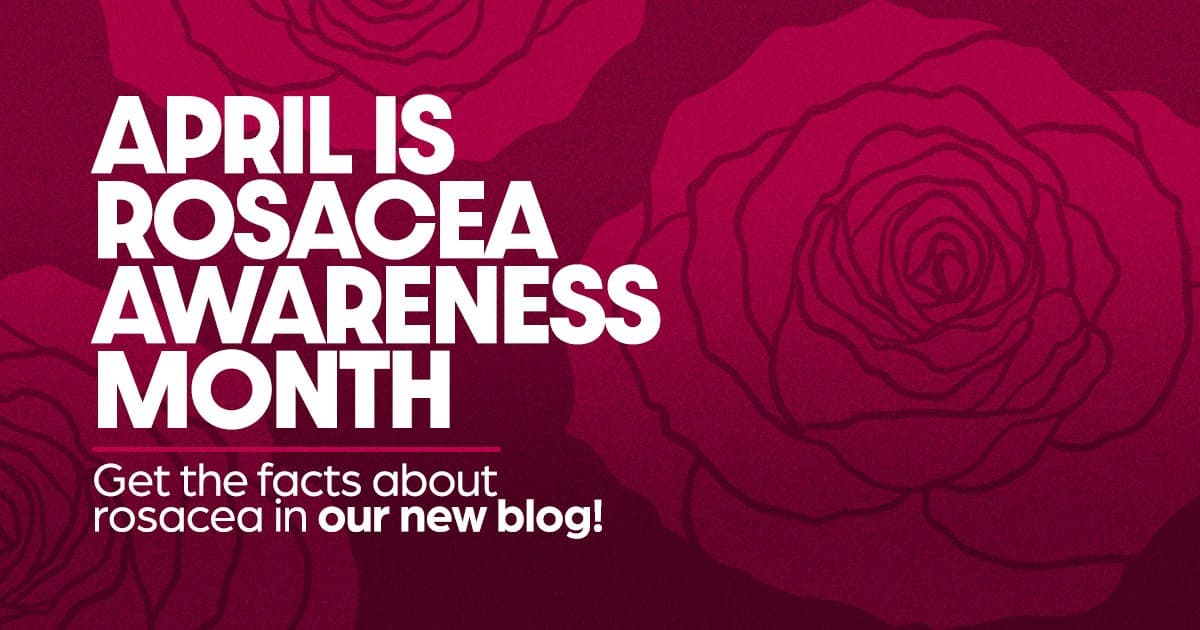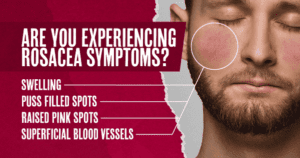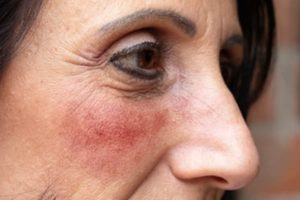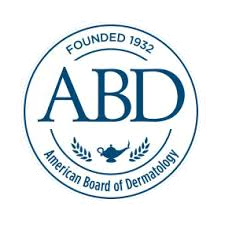Over 16 million Americans live with rosacea, and many more are unaware they have it. April is Rosacea Awareness Month, and the purpose is to spread accurate information and educate the public about the significance and prevalence of this common condition. By spreading the facts, we can also help those who don’t know they have it to get help too. How much do you know about rosacea? Keep reading to find out!
The Face of Rosacea
Rosacea is a chronic skin condition of the central face (nose and cheeks) that often cycles between flare-ups and periods of remission, with symptoms falling into four subtypes, including:
- Erythematotelangiectatic Rosacea (facial redness): Rosacea often starts as a tendency to flush or blush. Sometimes a sense of tingling or burning can accompany the redness, and the skin may turn rough and scaly. Visible blood vessels may also appear as thin red lines on the cheeks and nose.
- Papulopustular Rosacea (rash): A rash may appear in the areas of facial redness with bumps and pimples that resemble acne.
- Phymatous Rosacea (skin thickening): One of the more severe symptoms is the thickening of the skin, especially on the nose. Skin thickening of the nose mainly affects men and causes the nose to appear more prominent.
- Ocular Rosacea (eye irritation): Ocular rosacea causes the eyes to become sore, red, itchy, watery, or dry. The eyelids may swell and become red at the base of the eyelashes, and styes may develop. If left untreated, eye damage and loss of vision can result.
What Causes Rosacea
Anyone at any age can get this skin condition. Women are slightly more likely than men to get rosacea. However, men tend to get severe rosacea more often. Most people who get rosacea have these factors:
- Between 30 and 50 years of age
- Have a lighter skin tone and often have blonde hair and blue eyes
- Family history of rosacea or severe acne
- Individuals that have had lots of acne, acne cysts, or nodules
Scientists are still trying to find out what causes rosacea but have found several clues in addition to family history. They know that inflammation contributes to some key symptoms but don’t know why it occurs. Some suggest the inflammation may, in part, be due to:
- Increased skin sensitivity in people with rosacea
- Environmental stressors such as ultraviolet (UV) light1
- Microbes that naturally inhabit the skin
Take an Active Role in Controlling Your Rosacea
While there is no cure for rosacea, seeing a dermatologist can help you treat it to make your skin look and feel better. Most individuals have a good response to a combination of available medication and self-care measures. Schedule your consultation with Texas Dermatology today! Call us at (210) 829-5180 or request an appointment through our online portal.
Sources:











